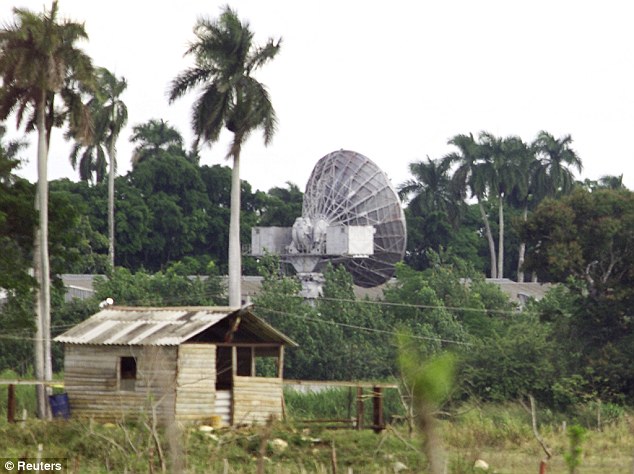SeaWaves magazine and Russian media reports indicate that Vladimir Putin will be in Havana February 12, 2016, for reopening of the Lourdes SIGINT station.
The Lourdes SIGINT (Signals Intelligence) facility, located near Havana, Cuba, was the largest facility of its kind operated by the Russian Foreign Intelligence Service or SVR, outside of Russia. Located less than 93 miles from Key West, the facility covered 28 square miles. Construction began in July 1962. The station was closed in August 2002. All station facilities were shut down, the buildings were abandoned and later reconstructed to become what is now the University of Information Science.
At its peak during the Cold War, the facility was staffed by over 1,500 KGB, GRU, FAPSI, Cuban DGI, and Eastern Bloc technicians, engineers and intelligence operatives. In 2000, it was reported that China signed an agreement with the Cuban government to share use of the facility for its own intelligence agency.
In July 2014, reports surfaced that Russia and Cuba agreed to reopen the facility for usage by Russian intelligence. Russia Today later removed their original story and replaced it (using the same url) with one denying there was such an agreement.
The complex was capable of monitoring a wide array of commercial and government communications throughout the southeastern United States, and between the United States and Europe. Lourdes intercepts transmissions from microwave towers in the United States, communication satellite downlinks, and a wide range of shortwave and high-frequency radio transmissions. It also served as a mission ground station and analytical facility supporting Russian SIGINT satellites.
The facility at Lourdes, together with a sister facility in Russia, allowed the Russians to monitor all US military and civilian geosynchronous communications satellites. It has been alleged that the Lourdes facility monitored all White House communications activities, launch control communications and telemetry from NASA and Air Force facilities at Cape Canaveral, financial and commodity wire services, and military communications links.
According to one source, Lourdes had a special collection and analysis facility that is responsible for targeting financial and political information. This activity was manned by specially selected personnel and appeared to be highly successful in providing Russian leaders with political and economic intelligence.
From this key facility, first the Soviet Union and later Russia monitored US commercial satellites, and sensitive communications dealing with US military, merchant shipping, and Florida-based NASA space programs. According to a 1993 statement by Cuban Defense Minister Raul Castro, Russia was said to obtain 75 percent of its military strategic information from Lourdes.
The Lourdes facility enabled Russia to eavesdrop on US telephone communications. US voice and data telephone transmissions relayed by satellites visible to the facility are vulnerable to Russian intercept. Although sensitive US government communications are encrypted to prevent this intercept, most other unprotected telephone communications in the United States were systematically intercepted.
In addition to its military strategic value, after the Cold War Lourdes was increasingly used to support the Russian economy, a high FAPSI priority. In addition to unprotected commercial information, personal information about US citizens in the private and government sectors also could also be snatched from the airwaves and used by Russian intelligence to identity promising espionage recruits in these sectors.
